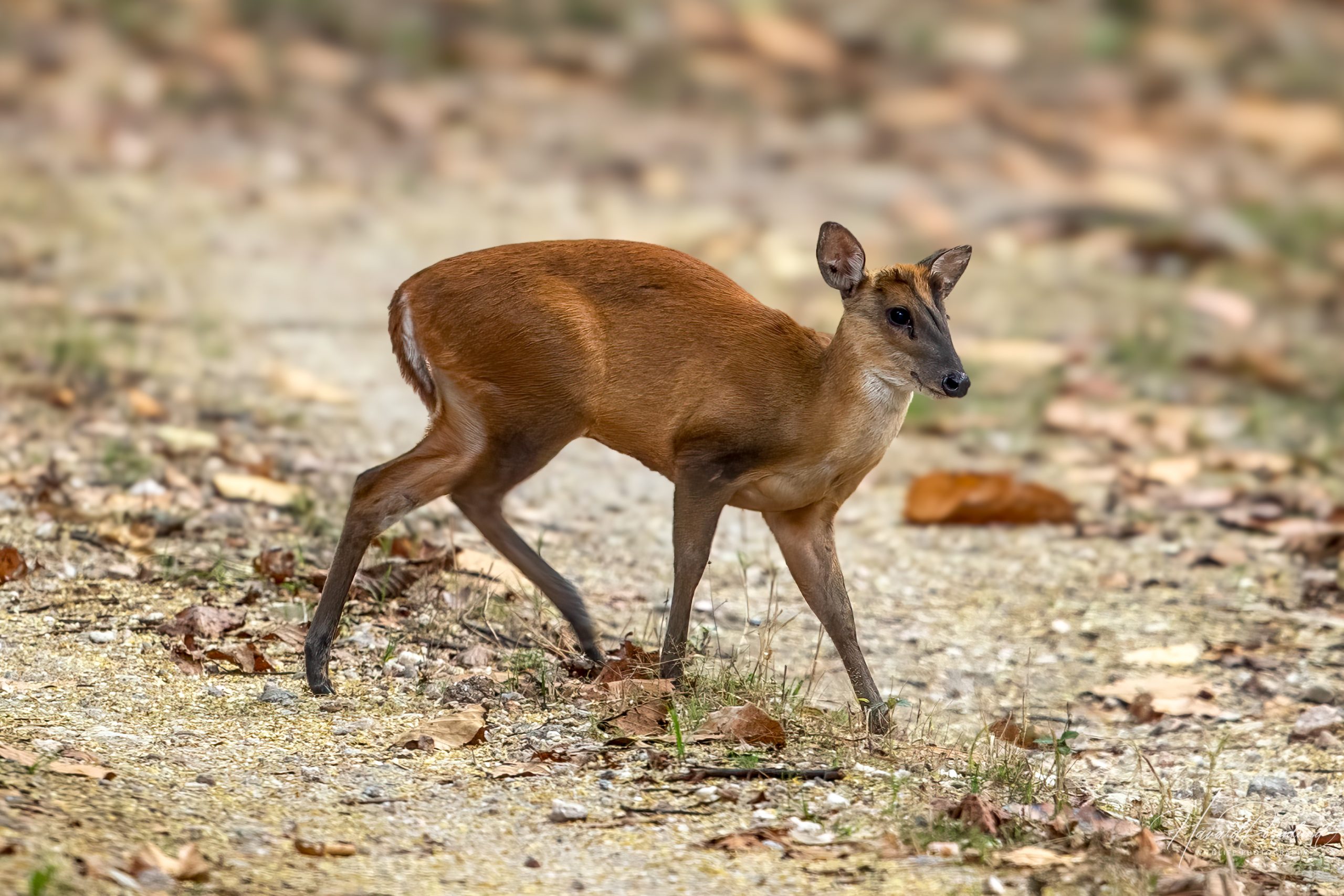Description
The northern red muntjac (Muntiacus vaginalis) is a small deer species native to South and Southeast Asia. It has a shoulder height of 50-70 cm (20-28 inches) and weighs between 15-35 kg (33-77 lbs). It features a reddish-brown coat, which becomes darker during the winter. Males have short antlers and small but visible tusk-like canine teeth that are used in territorial fights. One of the distinguishing features is the presence of dark facial markings and a V-shaped crest on the forehead. This species was once considered the same as the southern red muntjac (Muntiacus muntjak), and they were both referred to as the Indian muntjac, but they have been separated due to distinct genetic differences.
Diet & habitat
Northern red muntjacs are primarily found in dense tropical and subtropical forests, but they can also inhabit grasslands and shrublands. They are highly adaptable and can survive in degraded habitats near human settlements. Their diet is diverse, including grasses, fruits, shoots, seeds, and leaves. They are known to occasionally consume small animals and carrion. The muntjacs use their prehensile tongues to grasp and pull food items into their mouths, which allows them to feed on a variety of vegetation.
Behavior
The northern red muntjac is mostly solitary, although females are sometimes seen with their fawns. They are crepuscular, meaning they are most active during dawn and dusk. They are often referred to as “barking deer,” because of the loud, barking sounds they make when alarmed, which serves as a warning to other deer and potential predators. They are highly territorial, with males marking their territories using scent glands located on their faces. Males can become aggressive during the breeding season, engaging in fights using their antlers and tusks.
Reproduction
Northern red muntjac can reproduce year-round but breeding generally peaks during the cooler months. Males establish and defend territories that attract females. Courtship involves vocalizations and scent marking. After a gestation period of about 6-7 months, females give birth to a single fawn, which remains hidden in dense vegetation for the first few weeks of life. The mother visits the fawn periodically to nurse it. The weaning period lasts for about six months, and the fawn becomes independent shortly after. Northern red muntjacs have a life expectancy of around 10-15 years in the wild.
Status
The northern red muntjac is classified as least concern by the IUCN Red List, due to its wide distribution and ability to adapt to various habitats. However, it faces threats from habitat loss due to deforestation and agricultural expansion, as well as hunting for its meat and hide. In some regions, local populations are declining due to these pressures.








